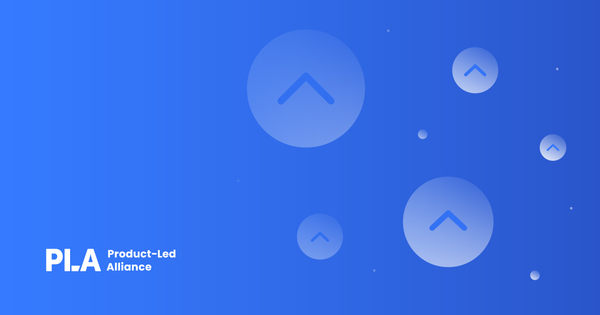What is product development?
Product development is the total process of coming up with the initial idea all the way to the design and marketing of the product. It encompasses the entire journey of delivering a new product or improving an existing one.
Product development methodologies are utilized to build new offerings, and a clear development plan gives organizations the means to delve into new product ideas and learn what users want in the early stages of concept development. Product managers (PMs) can be involved in the entire development life cycle; creating both an internal and external product vision, as well as leading development by following certain frames. But there’s no one role that owns the whole process.
From early-stage startups to established organizations, product development unites every department, including design, engineering, manufacturing, product marketing, UI/UX, and more. And each plays a pivotal role in defining, designing, building, testing, and delivering the product.
Of course, each development project involves tackling unique challenges, which require equally unique solutions. Making it vital for product teams to be able to identify market needs, conceptualize the product, build the product roadmap, create a winning product strategy, launch, and collect feedback.
In this guide, we’ll cover:
- Product development: defining the problem
- Product concept development frameworks
- The critical steps of development
- Tips for improving the process

Psst! Why not download this article in eBook format, so you'll always have these insights at your fingertips?
Product development: defining the problem
The most effective product teams have a deep understanding of the specific user problem they’re trying to solve and why that's important to the organization. They work with a level of autonomy, allowing them to tackle this problem in the most effective way.
PMs need to be able to clearly see the problem, plan out how they intend to solve it, and when to release value to users. The problem we’re referring to - well, this is a description of the unmet needs of the users, plus insight into exactly what makes them tick. Once this knowledge is obtained, it informs how the envisioned solution will be something that’s highly desired by the target user.
At the beginning of conceptualization, having the above knowledge will support a product development team’s understanding of their purpose; the problems they’re solving, goals they’re trying to achieve, the value to the user, and benefit to the business.
Product concept development frameworks
There are a number of frameworks that teams can follow at the beginning of the product development life cycle. These usually involve fully understanding user needs, conducting extensive market research, prototyping, and testing ideas for product discovery.
Two prominent frameworks in the field of product design are the Front-End Approach (FFE), and Design Thinking. We'll explore these two methodologies, highlighting their key principles, advantages, and differences.
Front-end Approach
The Front-End Approach is a systematic process that focuses on the early stages of product development. It is a structured approach that helps organizations understand and define what the customer needs before diving into the actual design and development phases. The FFE approach typically consists of the following stages:
1. Opportunity identification: This phase involves identifying opportunities in the market and determining whether there is a need for a new product or an improvement on an existing one.
2. Concept generation: During this stage, various ideas and concepts are brainstormed, considering customer needs, market trends, and technological capabilities.
3. Concept screening: The generated concepts are evaluated and prioritized based on feasibility, market potential, and alignment with the organization's goals.
4. Concept testing: A selected concept is tested with potential users to gather feedback and validate its viability.
5. Business analysis: This phase involves a detailed analysis of the chosen concept's financial and business aspects, including cost estimation, revenue projection, and ROI.
6. Development: Once the concept is approved, the product development phase begins.
Advantages of the FFE Approach
- Focuses on thorough research and analysis before committing resources to development.
- Reduces the risk of investing in unsuccessful product ideas.
- Ensures alignment with market demand and customer needs.
- Allows for early identification of potential challenges and roadblocks.
Design Thinking
Design Thinking is a human-centered, iterative approach to problem-solving that emphasizes empathy, collaboration, and creativity. Developed by design firm IDEO and Stanford University's d.school, it has gained popularity in various industries for its ability to foster innovation. The Design Thinking process typically comprises the following stages:
1. Empathize: Designers immerse themselves in the end-users experiences to understand their needs, pain points, and motivations.
2. Define: Based on the insights gained during the empathy stage, designers define a clear problem statement that needs to be solved.
3. Ideate: In this brainstorming phase, cross-functional teams generate a wide range of creative solutions without judgment.
4. Prototype: Designers create low-fidelity prototypes to visualize and test potential solutions quickly.
5. Test: Prototypes are tested with end-users to gather feedback and refine the design.
6. Implement: Once a solution is refined and validated, it moves into the implementation phase.
Advantages of Design Thinking
- Puts the end-user at the center of the design process, leading to user-centric solutions.
- Encourages interdisciplinary collaboration and diverse perspectives.
- Fosters creativity and innovation by embracing a "fail fast, learn fast" mentality.
- Adaptable and iterative, allowing for continuous improvement and refinement.
Differences between FFE Approach and Design Thinking
- Focus
- FFE Approach: Focuses on the early stages of product development, including market analysis, concept generation, and business planning.
- Design Thinking: Emphasizes understanding user needs, ideation, and rapid prototyping to create innovative solutions.
- User-centrality
- FFE Approach: User input is considered but may not be as central to decision-making as in Design Thinking.
- Design Thinking: Places a strong emphasis on empathy for end-users and their needs.
- Iteration
- FFE Approach: More linear and structured, with less emphasis on continuous iteration.
- Design Thinking: Iterative by nature, encouraging multiple cycles of prototyping and testing.
Both the FFE approach and Design Thinking offer valuable frameworks for product design, each with its own set of advantages and strengths. The choice between them depends on the specific needs and goals of the project and the organization's culture. Designers and product development teams can benefit from combining elements of both approaches to create a comprehensive and adaptable product design process that aligns with their objectives and fosters innovation in a rapidly evolving market.

Innovation strategies for successful product launches
This is a crucial part of successful product development. And the choices made here will eventually determine the most promising innovation options down the line. It should not be confused with the user interface, which is often referred to as the "front end" as well.
Front-end innovation involves scoping out the initial product concept and figuring out if the organization should invest further time and resources. It covers areas such as innovation strategy, search fields, business plans, road mapping, idea evaluation, and more.
Some of the common components of front-end innovation include:
- Strategic planning
- Idea selection and analysis
- Establishing the business and product vision
- Defining the product
- Conceptualizing and understanding product feasibility
- Building a business case and working out the requirements
New product development (NPD)
NPD essentially refers to the process of taking a product from concept to market availability and can apply to creating a brand-new product or improving on an already established one.
The process looks a bit different when looking at it from an engineering perspective. As the technical aspects are more emphasized, while the organizational implications are in the background. It’s essentially much more focused on technical design, prototyping, integration features, etc.
Let’s break down the most critical steps in the development process…
The critical steps of the development life cycle
Idea generation
The first step is all about laying the foundations. Any development of a new product or service usually begins with an initial idea. This stage is focused on the ways to come up with that innovative idea and hashing out the actual product concept.
Now, this doesn’t necessarily mean creating a brand-new product. For sure, building something brand new can be exciting and fulfilling. However, often some of the most innovative ideas come from iterating on something that already exists.
Iterating involves asking key questions about the existing product. Thankfully, Bob Eberle developed an effective technique that helps with this - the SCAMPER model:
- Substitute
- Combine
- Adapt
- Modify
- Put to another use
- Eliminate
- Reverse/Rearrange
Each letter in the acronym stands for a prompt to help us think about certain questions, which results in generating ideas.
Screening
The stage is designed to filter out workable ideas. Going through the screening stage can be invaluable for discouraging and avoiding the pursuit of costly unfeasible ideas, which could lead to distractions and delays.
PMs play a crucial role in defining the long-term product strategy and need to build a clear, realistic plan to reach the desired result. The key activity of the majority of product managers is setting a product strategy, with a clear roadmap, and seeing it through to the end.
During the screening stage, any decisions are weighed against a number of factors, including:
- Analyzing competition
- Legislation
- Changes in technology
These factors and more have a major influence on the organization’s decision criteria. When screening ideas, it can be helpful to assess them against an objective set of criteria. For example:
- The needs of the market and customers
- Details of customer behaviors and expectations
- The affordability of any ideas
- The technical feasibility required for these ideas
- The overall market potential of the product concept
- The profitability, relevancy, and desirability of the new products or product improvements
It’s a good idea to undertake a SWOT analysis for each of your ideas to identify their strengths and weaknesses. Something that can also apply to any competitors. Speaking of which, you can check out our Competitor SWOT Analysis Framework by becoming a PLA member.
Concept development
While we’re on the subject of conducting a SWOT analysis to identify strengths, weaknesses, opportunities, etc., this brings us nicely to the next critical step, which is product concept development. This involves evaluating the customers’ reactions to the product or service before it’s launched.
Product concept development is a structured way to foster an idea, undertake research, find out potential costs, see if customers like it, and determine what customer market is willing to buy it. This stage is arguably the most critical part of the entire product development process.
During this stage, clear communication is critical to ensure alignment across all teams, conducting customer research is required, as understanding the ideal customer is a cornerstone of the concept stage. Plus, gaining substantial and unbiased feedback for product validation cannot be overlooked.
Feedback helps paint a clear picture of the products and services they need. Once you have a concept to investigate, you can launch a survey to your existing customers and similar groups that includes questions like:
- Does the new product interest you?
- What feature do you like best - or dislike the most?
- How does the product compare to similar alternatives?
- How much would you pay for it?
- What product features would you change?
Head of Product at Lusha.com, Daniel Shimoni shares his extensive experience on how to leverage customer feedback to build great products here.

Plus, Chris Butler, AVP & Global Head of Product Operations at Cognizant, delves into how, in the world of product management, we don't focus on learning or feedback as much as we should. Dive in to discover his learnings on making learning look more like working.
Prototyping
The goal of this stage is to create a finished product. Of course, it’s this is unlikely to happen in a single attempt. Hence the need for prototyping, which usually involves experimenting with several versions of the product, and involves extensive market testing to eliminate options and make improvements until a final sample is settled on.
It’s valuable to start testing a minimum viable product (MVP) during prototyping, as this is a version of the product with just enough functionality for early adopters to use. This helps validate a product concept early and ensures PMs get feedback quickly to iterate and make incremental improvements.
It’s common to release the MVP to early adopters in order to gauge interest by running experiments, and testing price sensitivity and messaging. Early adopters will generally look past issues like a lack of quality-of-life features, as long their problems are being solved.
The results of testing and prototyping will make it clear whether the concept should be taken further. Prototyping usually involves experimenting with several versions of the product, and making incremental changes to finally arrive at the desired solution.
Rollout
This stage is also referred to as commercialization, and is the point where the product is well… ready to go! It’s time to introduce it to the market.
At this point, a product development team will collaborate with marketing to essentially launch the MVP. The first release will generally just have the core features, allowing the product to move forward and start generating sales.
The supporting operations should be prepared, technical support should be ready, and pricing and distribution details should have been finalized with all teams.
The rollout stage encompasses a few key steps, including:
- Test marketing - PMs often collaborate with product marketing managers (PMMs) at this stage to research current trends, collect and analyze customer feedback, define pricing, and develop a marketing strategy. All with the goal of improving the success of the product launch.
- Press strategies - These are often released to increase visibility through earned media. With the ultimate goal of course being to build broad visibility for the product, backed up by the credibility of the media outlet.
- Discounts and channel partner incentives - Often organizations will offer a price discount during a launch, incentivizing customers to buy. Similarly, if the org depends on a partner to sell or distribute the pricing, it might choose to offer pricing discounts and incentives to the distribution partner.
- Evaluation - This should be a recurring activity throughout the entire development process, but at this final stage, the team has the benefit of significant market data for the evaluation, which can help improve the post-launch plan. PMs can see which buyers purchase the product, how competitors respond, and, in some cases, how the new product interacts with other internal and competitor products.
Improving concept through to product launch
Focus on creating a long-term vision
The development process takes time and demands a lot of patience. Building new products over a long period requires having a vision and strategy in place that sets out how to get there, along with the budgets and leadership structure to support and execute the strategy.
Integrate technical and customer perspectives
It's critical to ensure executive teams take both customer needs and market needs into consideration when making key product development decisions. It's true that product orgs tend to be driven by technology, but they still need the right executive team to act as a board for approving development investments that encompass technical and customer skill sets.
Support product development with appropriate funding
It's surprising how many organizations don't focus on improving early-stage product development to help boost ROI. Funding is a must for product teams generating ideas, prototyping and iterating on those ideas to envision a final product. Getting the right funding in place for the first stages where new product concepts evolve into fully-fledged products is critical.
Create a product portfolio strategy
Having a product portfolio strategy in place is essential when an organization aims to build a stream of new products. It can allow for the strategic allocation of new investments within a portfolio of offerings and must be approached systematically while taking into account the needs of the core market, products in adjacent markets, and new products. The strategy should be periodically changed, based on the risk profile of the company and any changes in the market.
Make sure the org is the right size for the task
Product development requires resources but many organizations often commit too many resources to maintain an existing product, limiting what's available for new and innovative concepts. Larger organizations especially need to find the right balance of key contributors when dealing with more than one project at a time.
Have a method for capturing the voice of the customer
Product organizations need to have a lifeline to potential customers. This means having a methodology in place, such as design thinking, to accurately capture the customer experience. It's essential to be able to understand the voice of the customer and translate this seamlessly into the design process. This will help ensure you focus on the product features that your target audience values the most.
Enhancing product development with AI magic
In a world where technology is advancing faster than ever, it's no surprise that AI has stepped onto the stage of product development, adding a sprinkle of magic to the creative process.
From brainstorming innovative ideas to refining the final touches, artificial intelligence is revolutionizing the way products are conceived, designed, and brought to life.
Imagine sitting down for a brainstorming session, armed not only with your trusty notebook but also with an AI-powered brainstorming buddy. These digital geniuses can churn out ideas like a popcorn machine on overdrive, tapping into vast databases of information to inspire concepts you might never have dreamed of.
Whether you're conceptualizing a sleek gadget or the next big fashion trend, AI has your back, ready to break through creative blocks and send your imagination soaring.

But it doesn't stop at brainstorming. AI's versatility extends into the design phase, where it brings sketches to life with a virtual palette of infinite possibilities. No more hours of painstaking trial and error – AI algorithms can analyze your design preferences, study market trends, and even predict consumer reactions to help you create a product that's not just beautiful but also strategically on point.
One of the real charms of AI in product development is its ability to predict trends. Remember those times when you were convinced that neon-colored leg warmers were poised for a comeback, only for them to fall flat? AI can save you from such fashion faux pas by sifting through mountains of data to pinpoint emerging trends that have the potential to stick around. It's like having a crystal ball that can peer into the collective preferences of consumers worldwide.
Of course, refining your creation is essential before it hits the market. AI's prowess comes into play here, too, acting as a virtual focus group. It can analyze customer feedback from various sources to provide insights into what's working and what's not. Say goodbye to those awkward surveys and say hello to actionable insights derived from real conversations happening across the web.
But it's not just about data crunching; AI can lend a hand in the manufacturing process as well. Imagine optimizing production lines with predictive maintenance algorithms that can anticipate machine breakdowns before they happen. This means smoother operations, fewer costly interruptions, and more time to focus on refining your masterpiece.
In a nutshell, integrating AI into product development is like having a talented and tireless assistant who never gets tired of crunching numbers, analyzing trends, and sparking new ideas. It's like having an extra pair of hands and a pair of eyes that never miss a detail.
So, whether you're a seasoned product developer or just starting out, consider adding a dash of AI magic to your creative cauldron. Who knows what groundbreaking, trend-setting, and utterly amazing products you'll conjure up with this ever-evolving technological wizardry by your side!
Hungry for more content on product development?
Sign up and become a PLA member and get access to on-demand videos offering leadership insights, exclusive articles written by those paving the way in PLG, as well as templates and frameworks.




 Follow us on LinkedIn
Follow us on LinkedIn




